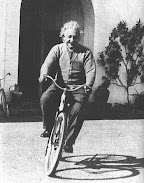Introduction:
When you write an LCD Program to write your name or any text, you can only display the same text at all times. If you have to change the text, you have to change the code, recompile it again and then reprogram it. Instead of doing all this, you can just connect your circuit to serial port of computer and change the text on LCD instantly using the hyperterminal of the PC. You can just type any text in the hyperterminal and press ENTER key. The text will be displayed on the LCD instantly. You can customize the display by changing the pattern.
Search Box

Custom Search
Search Result Place
Introduction:Many times, I have written code for UART communication and when it came to testing, my laptop does not have a serial port. I bought a USB to serial port converter but it didnt worked. I felt frustated and finally thought of buying a Serial to Com port module in an electronics hobby store. After seeing that I got the idea of making one myself. I have 2 USB AVR Programmers with me. I tried different circuits but they didnt worked for Windows 7 because of driver problems. I googled for the circuit and finally came to know that the circuit of USB Programmer and USB to Serial port are both same. I just have to connect some wires in the programmer and change the firm ware of the programmer and it became USB to Serial Converter! Voila! My laptop has a serial port now!
There are other methods in internet, but you can only them in old PC's of with Windows 98 or XP. You will find support for high end operating systems like Windows 7. This circuit is tested and it is working 100%. I started using COM port for all my projects because you can give different inputs and debugging became even more simple using serial port.
Category:
AVR Projects
6
comments
Hi everyone! First of all I would like to thank Avinash Gupta for writing all the valuable tutorials and libraries for AVR Microcontrollers and helping people like me to build projects and learn new things. I am dedicating this post to him!
 For Excellent AVR Tutorials click here.
For Excellent AVR Tutorials click here.Introduction:Using remote keys from 1 to 4, you can control 4 appliances. You can easily extend this number to as many you wish. For example, if you press key_1 on your remote, fan will turn ON. If you press the same key again, fan will turn OFF i.e each time you press a key configured for an appliance, the condition will toggle. I have programmed the MCU such that all devices will turn OFF on pressing power button(RED COLOR on top of your remote). You can also choose combinations like turning all fans OFF at a time, etc. With little tweaking, you can change the program yourself! The status of the appliances is shown in an LCD. You can ignore this feature if you dont want LCD. I used LCD for developing the code.
I main advantage in this project is that the appliance status is stored here using internal ATmega8 EEPROM. So, whenever mains power goes off and comes again, the appliance will be in the same state in which it is before. Suppose if power goes off during night. The fan will be off. When power is back, the fan will be automatically turned on again. You dont have to search for remote again!
I main advantage in this project is that the appliance status is stored here using internal ATmega8 EEPROM. So, whenever mains power goes off and comes again, the appliance will be in the same state in which it is before. Suppose if power goes off during night. The fan will be off. When power is back, the fan will be automatically turned on again. You dont have to search for remote again!
Category:
AVR Projects,
Home Appliance Control
30
comments
Programmer and Development Board from Extremeelectronics:
Look at the below picture. The programmer I am using is bought from another manufacturer, not from extremeelectronics. It is an USB Porgrammer. You can get it from any leading electronics hobby electronics store. My programmer is not pin compatible with XboardMini which I brought from extremeelectronics. I modified the ISP connector for connecting the USB programmer with the board. The XboardMini does not has Vcc connection in its ISP connector. My programmer has Vcc connection in its ISP connection. 10th pin is free (not connected) in the Xboardmini ISP circuit. I modified my cable such that 9th pin gets Vcc from USB programmer.
The red wire I connected goes from 10th pin to one of its Vcc node. In this way, the board directly gets Vcc from USB power supply. You dont have to use 9V adaptor for programming and powering the board.
I dont know whether the usb programmer from extremeelectronics is having Vcc connection in its ISP Port. Just find an empty pin in the ISP connector in programmer and Development board. Connect that pin to Vcc of the USB port. Just do the same thing in the development board also. Connect the Vcc pin of ISP port to Vcc rail in the board. using this setup, I am able to carry the development board and programmer in my laptop. I dont have to carry a 9v adaptor as finding power sources is not so easy for me as I am always in move. I am happy with my Acer Mini as I am getting a backup of 7hrs! Thanks to Intel for creating such low power processors!
Category:
AVR Projects
2
comments
Circuit Description:
Ever Imagined controlling your home appliances using your cell phone. You can find a lot of circuits for this application. But they make use of Telephone. I modified the circuit and redesigned it to make it compatible with normal cell phone headphone. Just connect the your phone headphone jack to the phone and the connections to the circuit as shown in the circuit. The relays are connected using the resistor and transistor. Use ULN2803 to reduce the circuit size and increase the performance. The connections from the output of flip-flops has to be given to the inputs of the buffer and relays has to be connected to the buffer.
Normally the tip of the headset is connected to the circuit to the 0.1uF capacitor as shown in the circuit diagram. The ground pin of headphone is connected to the ground of the circuit.
Circuit Diagram:
Operation:
When you press keys in your Phone, the other person will hear some tones with respect to keys pressed. This tones are based on the DTMF technology. Data is transmitted in terms of pair of tones. The receiver detects the valid pair and gives the appropriate BCD code as the output of the DTMF decoder IC.
Category:
Home Appliance Control
31
comments
IR decoder Circuit:
The IR circuit can be used to switch devices using TV Remote. Normal circuits can switch only one device. But using this circuit, different devices can be controlled using same remote with different switches. In this circuit, we interfaced 8 devices. These devices are switched using remote keypad -1 to 8. AT89S52 microcontroller is used to control the inputs and outputs. TSOP 1738 (infrared receiver) is used to receive the infrared signals from TV Remote. ULN2803 (High voltage, high current) buffer is used to drive relays.
Circuit Diagram:
Category:
Home Appliance Control
27
comments
RF Controlled Home Appliance Circuit
arifuddin
Circuit Description:

Transmitter
Category:
Home Appliance Control
9
comments
 you can control your home appliances very easily using this circuit. Use ULN2803 for controlling 8 devices. just connect pin-1 of parallel port connector to pin-1 of ULN2803. You will have 8 channels in ULN2803 and 9th pin is ground for that IC.
you can control your home appliances very easily using this circuit. Use ULN2803 for controlling 8 devices. just connect pin-1 of parallel port connector to pin-1 of ULN2803. You will have 8 channels in ULN2803 and 9th pin is ground for that IC.
Category:
Home Appliance Control
5
comments
 This is one of the popular EFY circuit. i build this one very easily. The circuit consists of very less components and simple in design.
This is one of the popular EFY circuit. i build this one very easily. The circuit consists of very less components and simple in design.Connect this circuit to any of your home appliances (lamp, fan, radio, etc) to make the appliance turn on/off from a TV, VCD or DVD remote control. The circuit cane activated from up to 10 metres. The 38kHz infrared (IR) rays generated by the remote control are received by IR receiver module TSOP1738 of the circuit. Pin 1 of TSOP1738 is connected to ground, pin 2 is connected to the power supply through resistor R5 and the output is taken from pin 3. The output signal is amplified by transistor T1 (BC558).
Category:
Home Appliance Control
57
comments

This is my first post and and this is the first circuit i made. There are many types of circuits for controlling home appliances using TV Remote. In fact I had confused a lot when I am a beginner searching for this type of circuits. The circuit here 555 timer IC to avoid fast switching. you can only switch the circuit after 3 seconds.
IR remote sensor IC TSOP 1738 is used for recieving the signal. Normally when no signal is falling on IC3 the output of it will be high.This makes Q1 OFF.When a signal of 38 KHz from the TV remote falls on the IC3 its output goes low.This makes Q1 conduct and a negative pulse is obtained at pin 2 of IC 1 NE 555.Due to this IC1 wired as a monostable multivibrator produces a 4 Sec long high signal at its out put.
Category:
Home Appliance Control
22
comments
Subscribe to:
Posts (Atom)








